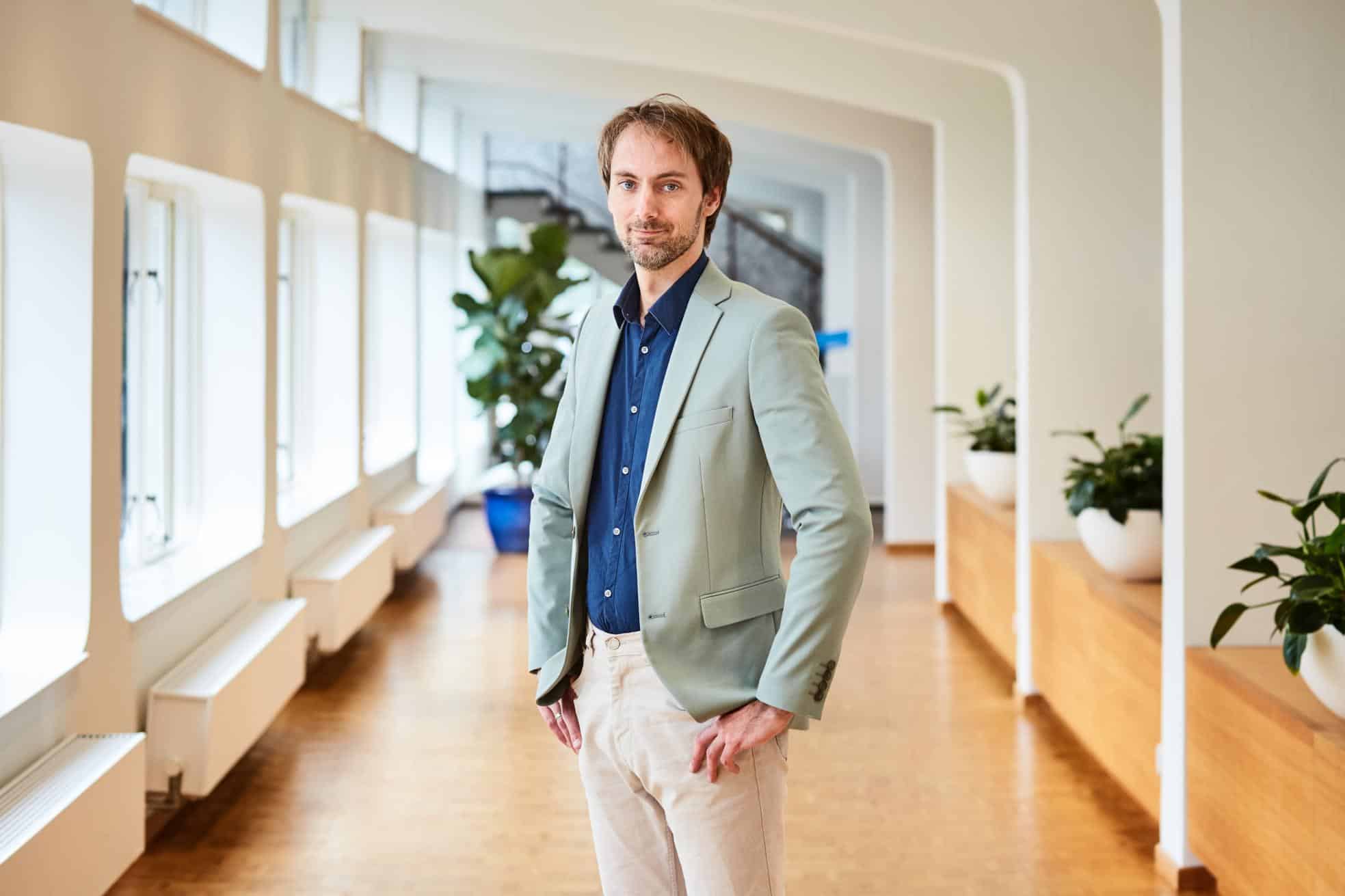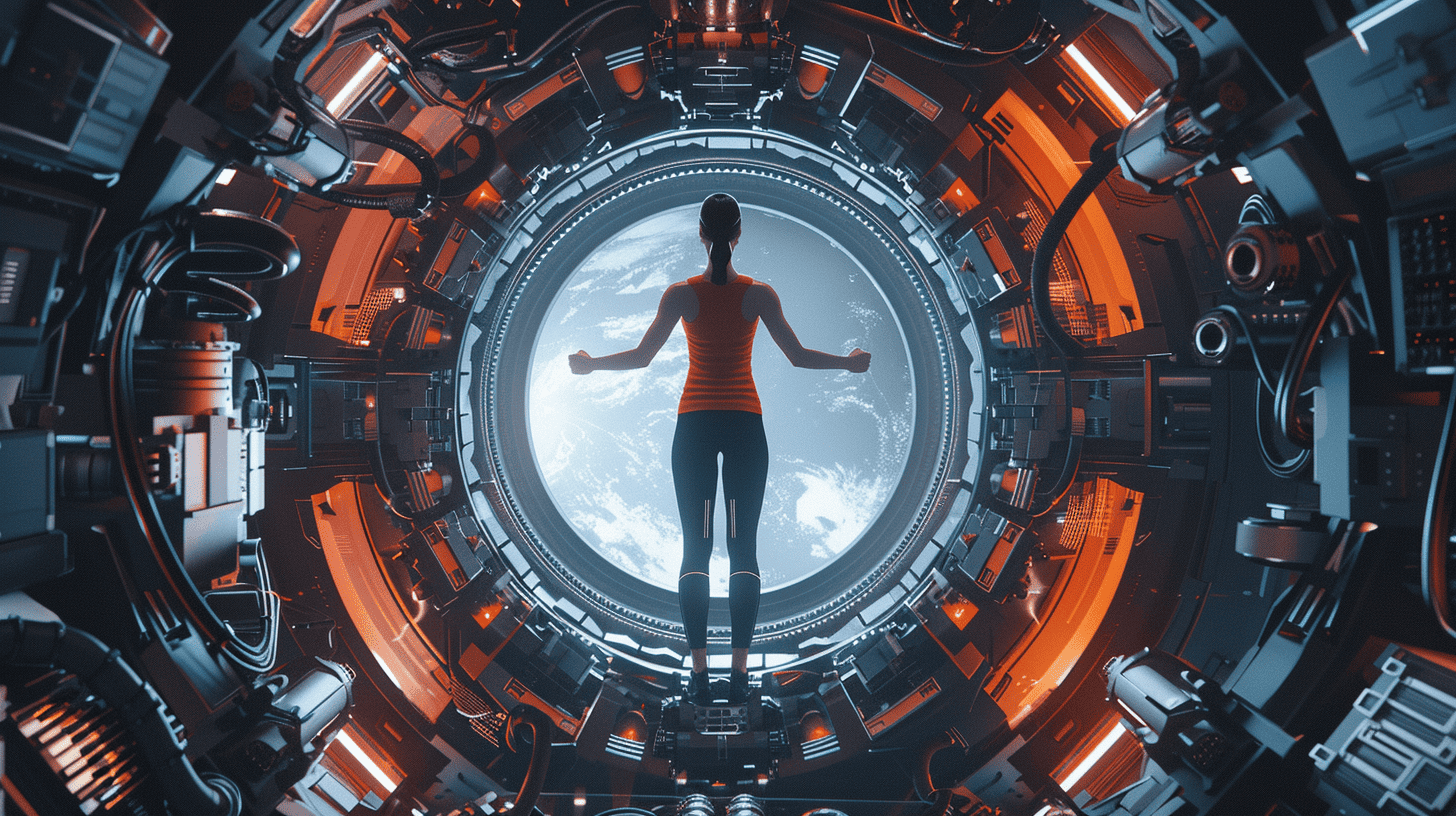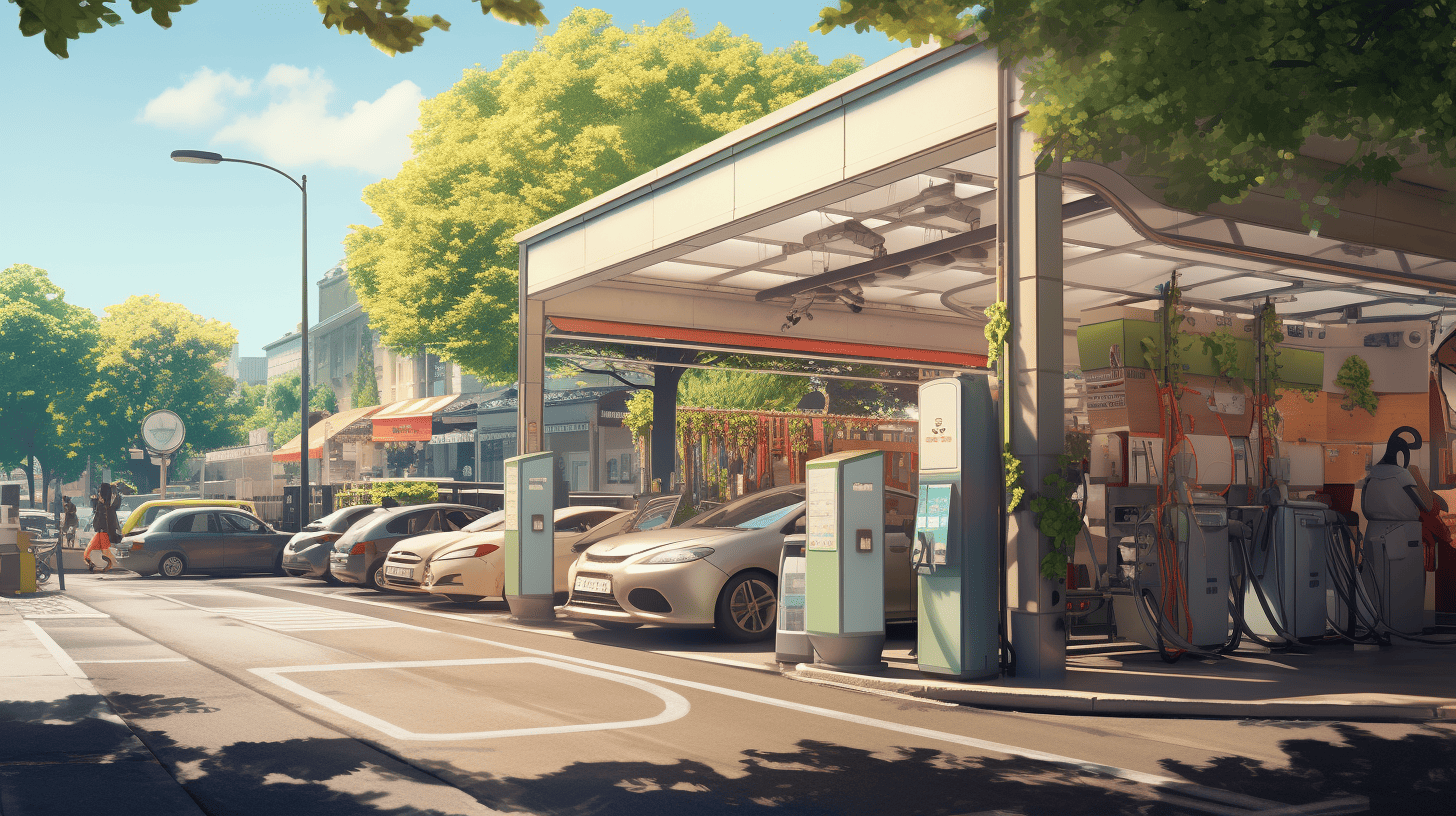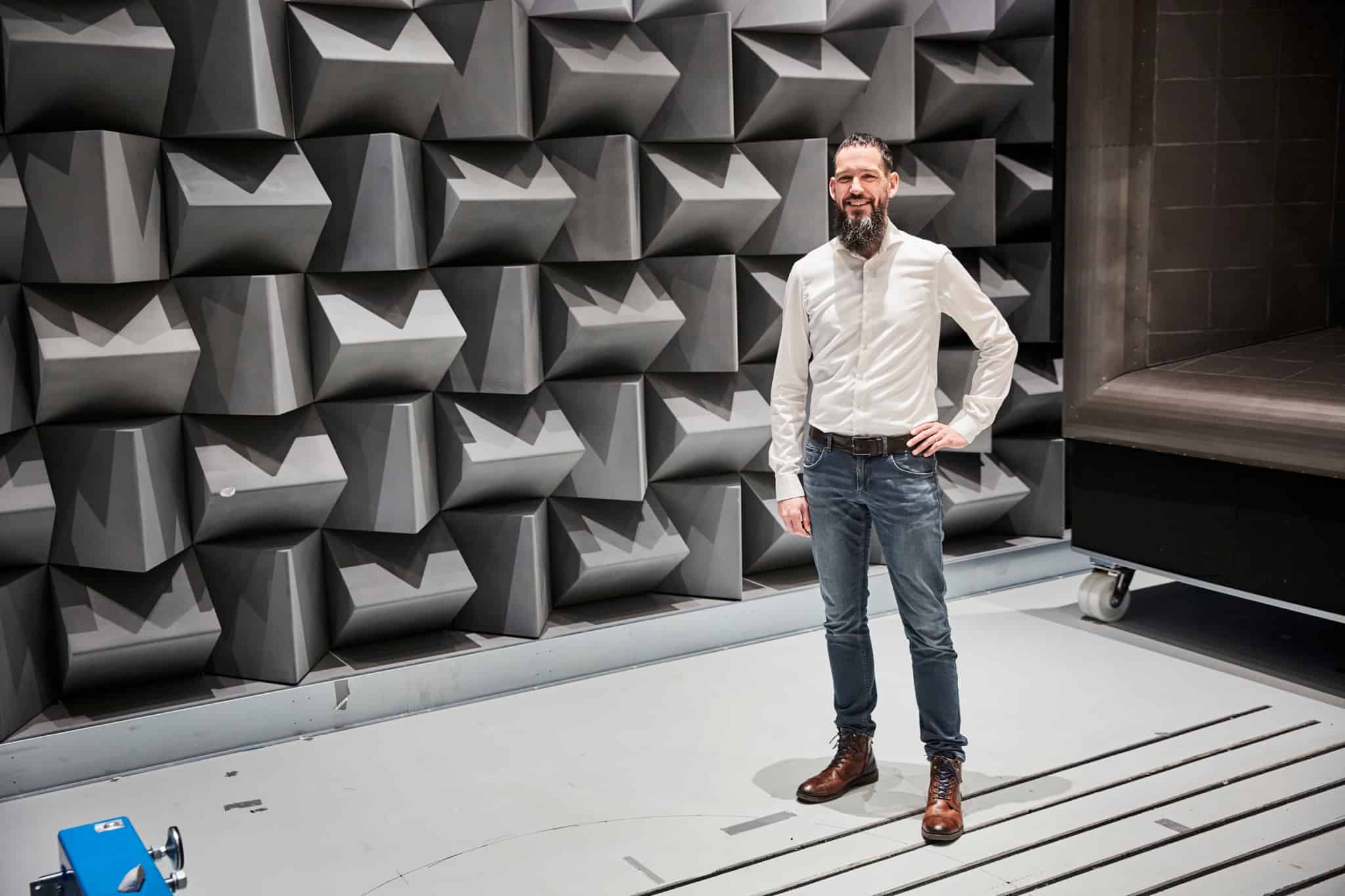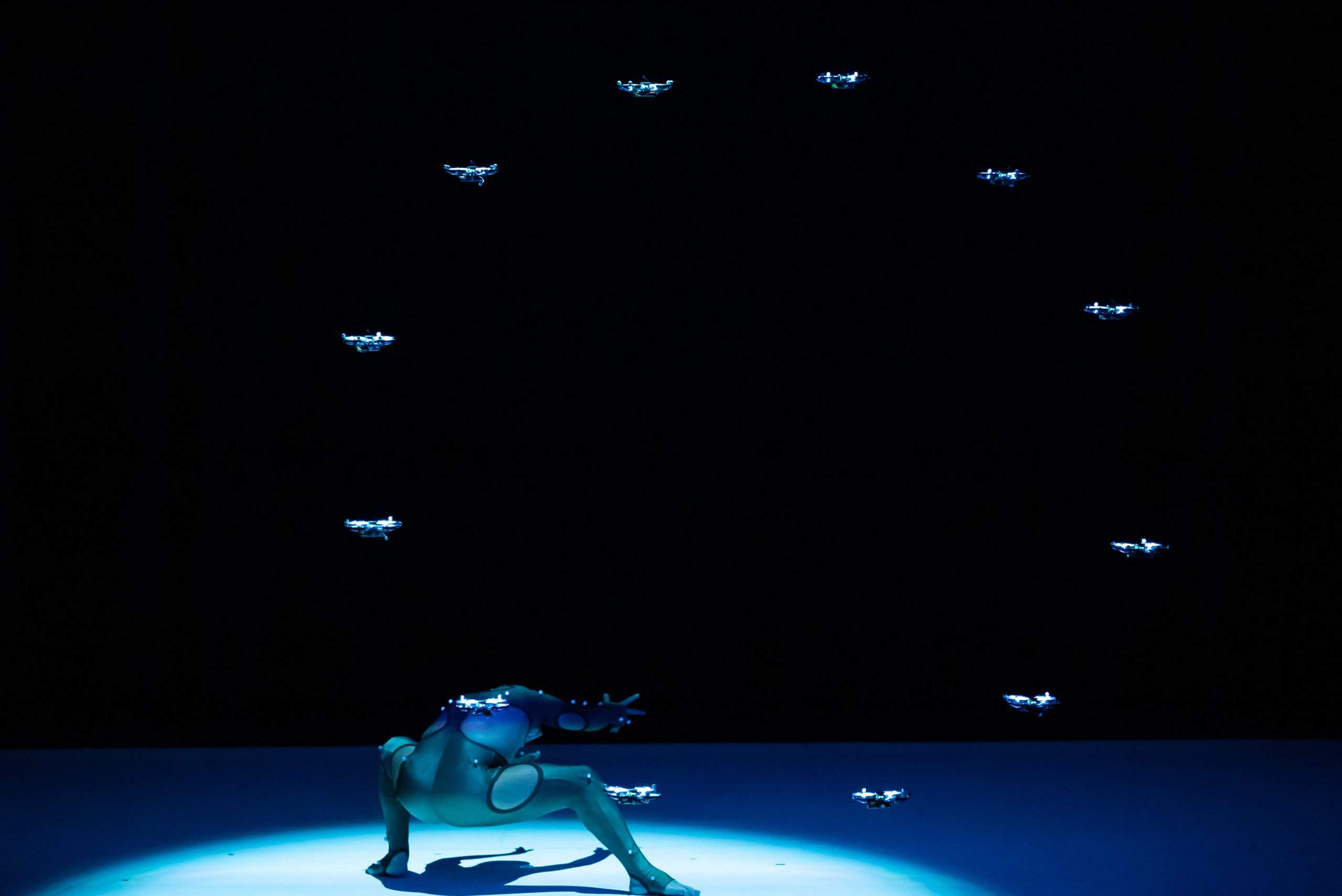
The world-famous choreographer David Middendorp choreographs unique performances by combining dance with technology. With his dance group Another Kind of Blue, he has created a performance with drones, called Airman. A swarm of twelve drones imitate a dancer on stage. Airman is one more step on his path to a duet between a dancer and a fully autonomous swarm of drones.
“Technology is to me as a choreographer is what paint is to a painter,” Middendorp says. “Because of everything that’s possible now in terms of technology, I have an ever-expanding color palette.” He began his quest with the following question: What is free will? How free are we ourselves in reality? And how close can technology ever get to this free will? “Both technologically and choreographically, a fully autonomous swarm of drones is a great tool to demonstrate this,” Middendorp says. Through several performances, he takes one step at a time toward his ultimate goal: A choreography in which dancers and fully autonomous drones dance together.
Dutch AI Coalition
Just as the brain is still the most elusive part of our body, artificial intelligence is still very much uncharted territory. That our brains control our bodies is something we as humans have come to accept. However, this does not apply to the way in which AI is gradually taking over control of our society. We would like to have a few more vigorous debates about that. In a series of articles and interviews, Innovation Origins, in close cooperation with the Dutch AI Coalition, reveals what the average Dutch person feels about this all-important social revolution. How do we as humans keep our hands on the controls? The fears, the opportunities, the dilemmas.
Free will is an age-old social theme. The rise of Artificial Intelligence (AI) lays the subject bare once again. To what extent can we as humans program the brain and hence the will of robots? And are we not letting ourselves be influenced too much by smart algorithms from, for example, social media? Middendorp has been working on a series of performances on this theme for ten years. Technology never stands still.
Dance data
For instance, the choreographer is already working on the next performance with the help of an algorithm that makes the drones work autonomously. “We collect a lot of data from dancers who improvise. This allows the computer to learn what is a logical continuation of a certain movement,” he explains. Middendorp hopes to be able to use this during performances in about three years from now. “It’s a long and complicated process that involves a lot of underlying technical challenges,” he admits. The drones used in the performance Airman are also already equipped with the algorithms needed for this. Among other things, to ensure that the flying robots can actually localize themselves and the dancer in space. “That was already quite a task,” he explains. “And these don’t even have to think for themselves; they copy the behavior of the dancer.”
The drones are a special part of the performance for the audience. “Occasionally one of them falls out of the sky during the performance,” Middendorp confesses.”That’s unfortunate, of course, but I also see that it has a certain impact on how people experience the performance. It seems as if people have a greater appreciation for the performance when they see that not everything goes smoothly all the time.” That way, the audience can also see that the drones are not pre-programmed, but really do react to the dancer. “Apart from that, it’s interesting to see that people actually view the drones as having a personality. For example, when one of the drones was having trouble taking off, people would say afterwards, ‘It didn’t really want to join in.’ Even though it’s basically just a device.”
Source of inspiration
In addition to using new technologies in his performances, Middendorp sees technology as a great source of inspiration. For example, he looks at how people interact with technology and how that is changing society. “Technology has a lot of influence on our identity. How we look, what we eat, what we do, everything is shaped by technology. We can’ t imagine our lives without it any more,” he states. “You see people’s desires reflected in technology. People are going to build what they want to have. In some cases, these are weapons,” he goes on to say. “In most cases, people build a tool to improve their lives, such as tractors to grow better food or an airplane because people want to fly.”
AI and culture
Innovation Origins asked a number of Dutch people about their views on AI in the culture sector. “Besides the traditional way of enjoying culture, there are plenty of other ways to experience culture,” they said. How we are going to see AI manifest itself exactly in the future is still hard to say. Respondents foresee two distinct areas. On the one hand, AI can provide personalized tours of museums and the consolidation of information from different archives and collections. On the other hand, they think that AI can also work like an artist itself. By creating paintings, for one thing. According to the respondents, it should always be considered important to further explore and discover AI withn the cultural sector. “Culture is important, it teaches us what our history looks like and how the future will be shaped.”
Impact on society
Middendorp sees technology as a part of our culture, just as art is. “A lot of people see it as separate from each other, but in my opinion it is inextricably linked,” he says. Eppo van Nispen tot Sevenaar, director of the Netherlands Institute for Sound and Vision and quartermaster for the Culture and Media working group of the Dutch AI Coalition, also agrees. “Culture is important for the development of society, it concerns everyone.” In addition to the social factor, culture definitely has an economic factor to it as well, according to Van Nispen. “Many people see it as a sector that only costs money, but that is not the case at all. It is a mature sector, both in economical and social terms.”
Van Nispen believes that AI can make a difference in this important sector. For example, an algorithm can label archival material from museums. This is boring and monotonous work for people to do. Perhaps a robot will show us around a museum in the future. Which can be done either physically or, for example, via an app on a smartphone. This is set to become an important part of the revamped Netherlands Institute for Sound and Vision. By using an app, visitors build their own media personality while they do various kinds of activities in the museum. “This way, people can become acquainted with the power of algorithms in a low-key way,” says the museum director. “That’s an important role for the cultural sector.”
Ideals
This example of an app is one of the practical applications of AI. Although, aas far as Van Nispen is concerned, this is by no means all that it has to offer: “It often seems as if AI always has to have a very practical purpose, while this is not necessarily always the case. Most innovation has not arisen from efficiency, but by chance or from the pursuit of an ideal.” Which is also reflected in other disciplines within the cultural sector, such as in David Middendorp’s choreographies. He is inspired by the enormous impact AI has on society and the way in which people interact with it. “AI has two sides. The technology itself is not good or bad, it depends on what you do with it,” Middendorp contends.



